Tomorrowland without lines and with five-minute, touchless check-in is arriving. Honolulu’s Terminal 1 is on the list. Alaska Air Group now invites travelers to enter the airport with a promise to change how Hawaii trips begin and end. While there’s no firm date for full implementation yet, this no-line experience is set to remove some of the biggest headaches from the airport journey soon.
This mobile-first, biometric-supported approach is designed to transport travelers from curb to gate with fewer stops, no kiosks, and much less stress. This change can’t come soon enough for anyone who’s stood in the crowded Terminal at HNL wondering which line to get into—or whether they’ll make their flight on time.
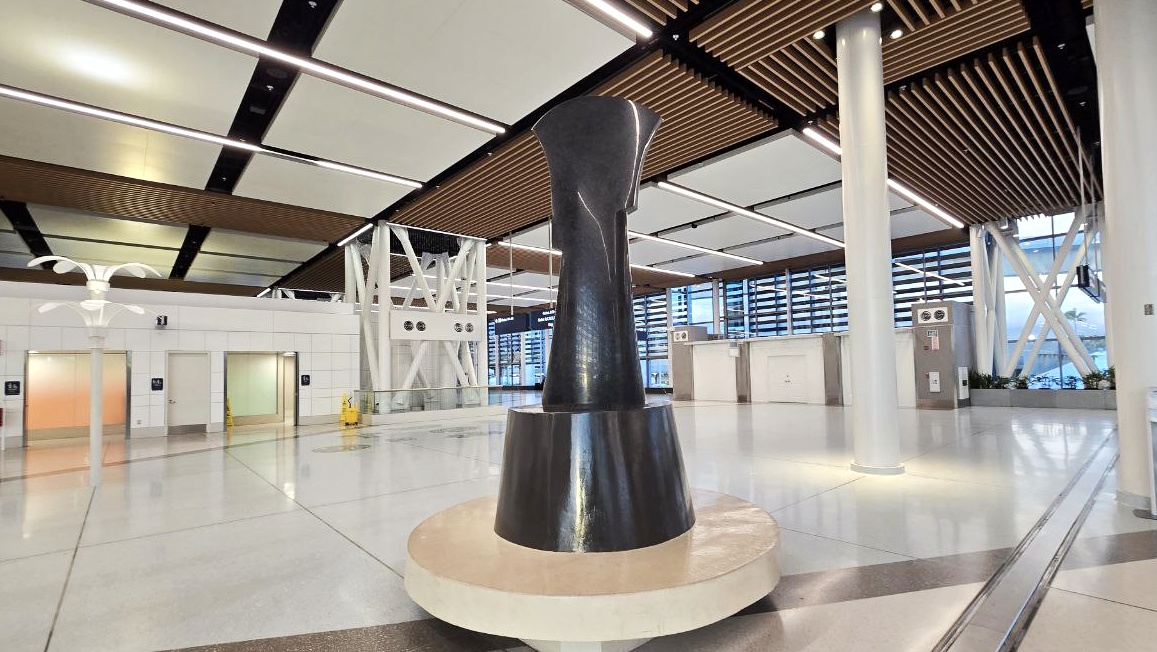

From curb to lobby exit in just five minutes. Really?
This updated lobby experience centers on speed and simplicity. Travelers will check in on their phones before leaving for the airport. Once at the terminal, they’ll skip traditional check-in lines and head straight to a new kind of station.
These stations print bag tags instantly after a quick phone scan—no more rushing through crowded terminals or worrying about missing your flight. There’s no touchscreen, no logging in or menus to fumble through. Travelers who have already checked in just scan their boarding pass and move on.
It’s even faster for those using a new Alaska electronic bag tag. These costly reusable devices automatically update with flight details via the airline’s app. Bags can be tagged at home, then dropped off at the airport with no additional steps. At a steep $70 each, most Hawaii travelers are unlikely to adopt them widely.
Compared to the current process—which involves standing in multiple lines, waiting for kiosk access, and manually entering information—this upgrade sets to dramatically reduces time spent and removes nearly all guesswork.
Biometric ID adds speed and security.
Another prominent feature of the new system is optional facial recognition. Travelers who opt in will have their identity verified by camera instead of pulling out any ID or scanning a boarding pass.
This technology is already being piloted through a TSA partnership known as Touchless Identity Solutions. Once enrolled, a traveler’s face becomes their boarding credential, speeding up the check-in and security screening process.
Biometric data is stored securely, used only for verification, and never shared outside the approved system. Travelers who prefer not to use facial recognition can continue using traditional methods without losing access to any other features.
No more fumbling through documents, showing ID multiple times, or dealing with last-minute boarding pass issues. This could cut the most frustrating steps out of the travel day for many. We have already been using biometrics at Honolulu Airport Terminal 1, although at this time, it still requires a valid ID, but there is no boarding pass.
Lounge access also goes friction-free.
The upgrades don’t stop at check-in. Premium Hawaii travelers flying on Alaska or Hawaiian, clearly another focus for the group, will also benefit from a more seamless flow. Instead of presenting paper or digital credentials, approved guests will be recognized by facial ID and admitted without delay at the lounge entrance.
This eliminates one more delay and removes the need to search for passes in an app or wallet. It’s part of a broader push to eliminate all unnecessary stops and make the Hawaii airport experience feel more connected from start to finish.
These systems also reduce staffing needs at busy touchpoints, allowing agents to focus on travelers who need extra help.
Adjusting to Honolulu’s unique terminals.
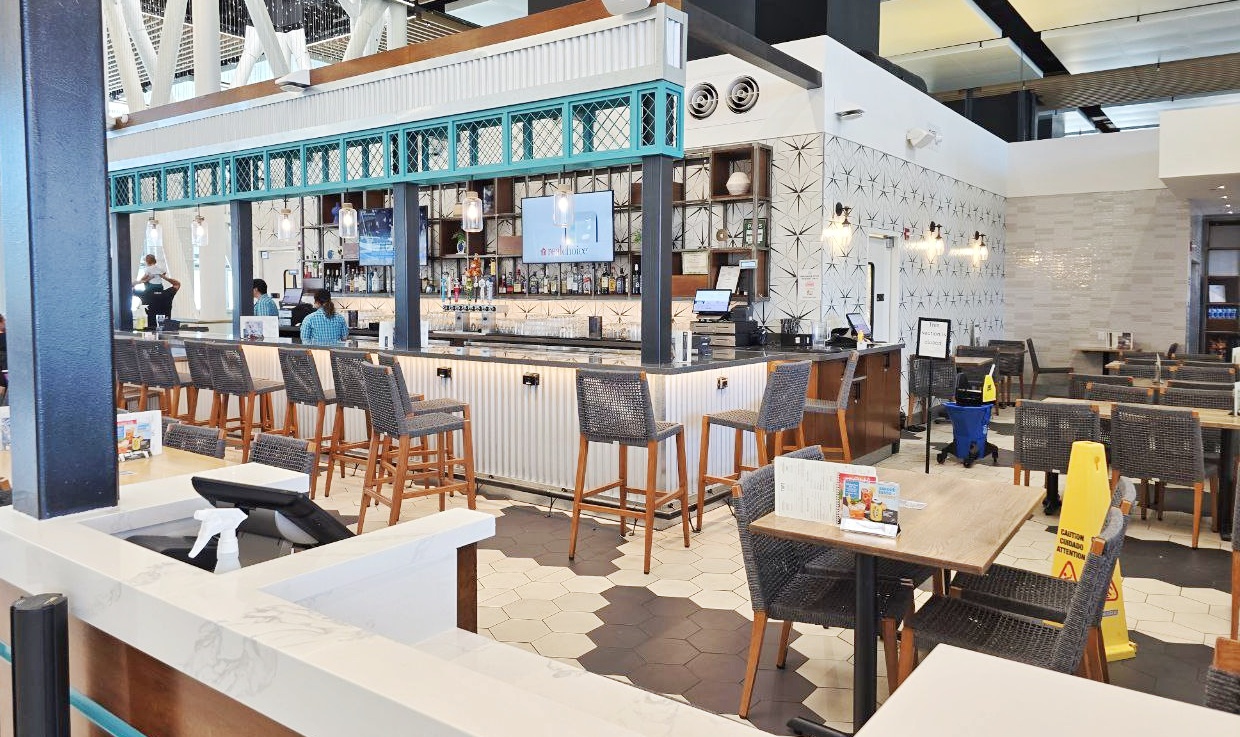

Rolling out this technology in Honolulu comes with its own set of challenges. The airport’s complex and aging infrastructure require special consideration, from hardware durability to passenger flow.
Humidity and exposure to the elements often slow down traditional equipment, requiring special climate-adapted solutions. Officials behind the rollout have confirmed they’re adapting the design to suit Hawaii’s climate and terminal structure.
That includes weather-resistant materials and layout changes to accommodate HNL’s split-terminal design, where Alaska and Hawaiian operate from three separate, currently disconnected areas. Clear signage and updated guidance, which travelers frequently mention as missing, will be key to ensuring a smooth experience.
What’s driving this transformation at HNL?
This terminal overhaul is part of a much larger plan to consolidate the two Hawaii-centric airlines, soon to operate entirely as one company. As their networks and operations merge, investments in customer-facing technology are accelerating.
While this solution is part of a broader modernization plan across the airline’s network, Honolulu is getting early attention and access to the upgrades. Executives have emphasized that Hawaii’s role in the newly merged carrier makes it a showcase location for the system’s rollout and adaptation.
Honolulu is a top focus as the new key hub in the Pacific. What’s coming here first may soon ripple out to other airports with Hawaii-bound and other routes.
And this isn’t just about check-in. These changes signal a broader realignment of how airlines manage time, staff, and traveler experience—all of which impact Hawaii travelers more than most due to long flights, connections, and weather-driven delays.
Why this matters for Hawaii travelers.
Honolulu Airport is often a traveler’s first and last impression of Hawaii. If the process feels chaotic or unclear, it can sour the start or end of what should be a relaxing vacation that re-invites travelers back to the islands.
This new system is built to smooth out that sometimes clunky experience. Travelers will hopefully gain predictability, speed, and reduced stress on travel day. Families managing kids and luggage, couples racing to beat the crowds, and even solo travelers with early flights all benefit.
With the option for expensive reusable bag tags and less overall reliance on single-use paper, each trip’s environmental footprint should shrink somewhat.
A sign of more changes to come at Hawaii airports.
The lobby transformation isn’t happening in isolation. It’s a first step toward a more connected travel experience. Behind the scenes, Alaska and Hawaiian Airlines are working on streamlining TSA access, improving gate boarding flows, and upgrading mobile tools to match.
Honolulu may be early test market not because it’s easy—but because it’s essential.
If this system works in Hawaii, it could shape the future of Alaska Airlines airport design elsewhere.
While not everyone will be ready to embark on a fully biometric, app-based airport journey, the trend is already underway. As one Beat of Hawaii reader recently commented, “If this helps skip the chaos at HNL, sign me up.”
When will it launch?
A precise rollout date has not been announced, but planning is underway. Based on official statements, initial tech installations could appear in 2025, with broader adoption likely in phases through 2026.
As systems are tested and feedback rolls in, adjustments will be made to ensure the upgrades work to improve the travel experience for Alaska and Hawaiian flyers rather than solely for the benefit of the airlines.
This story isn’t just about new machines or apps—it appears to be more holistic and about trying to create a travel experience that reflects Hawaii’s values of hospitality, sustainability, and care for both visitors and place.
Let us know: Have you already opted into facial recognition, and are you looking forward to this expansion with mobile check-in for your next Hawaii trip? Or do you prefer the traditional airport routine?
Get Breaking Hawaii Travel News
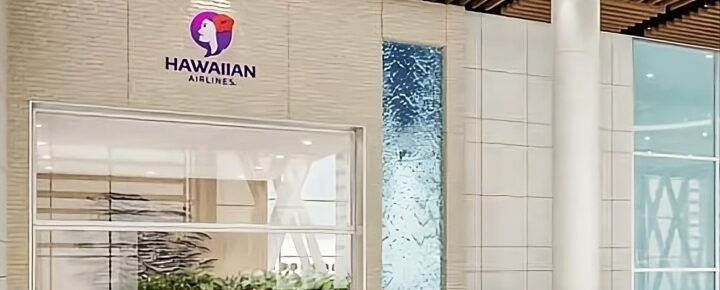



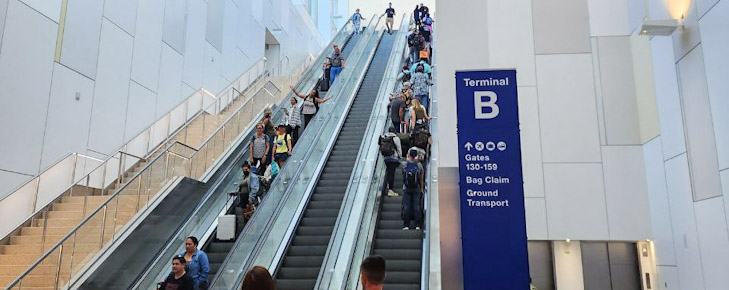
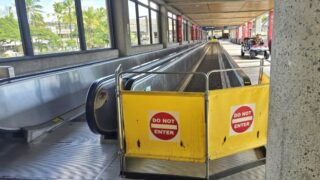
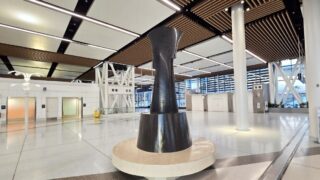
The consolidation of Hawaii and Alaska will provide less migraines but still miserable for those connecting to United Airlines. Flying from the big Island is horrendous if you book a ticket from Hilo or Kona to Honolulu and the mainland on United, it’s always $300 more. So two individual bookings, which means you have to drag your checked luggage from one end of the airport a full mile to the other end to check in. It’s miserable whether you’re inside or outside I cannot always travel with carry-on.
Worse, the loss of priority pass lounge access means you’re sitting around if you cannot check into United for until three hours prior. Any extra travel dollars?.. buying into the United lounge unless international travel allow me to access for free. In no foreseeable future will you fly on Hawaiian and transfer to United comfortably.
More invasive tech, with the focus on reducing labor costs and then spun into passenger benefits.
Not sure but airline biometrics includes your height,weight, facial shape and eye spacing retina scan. This process also includes fingerprints. Sorry I’m not being arrested so I feel these records could be compromised and one’s identity stolen. These people aren’t medical licensed personnel so IMO they can’t make you do it. HEPA Law. Sorry but is it really worth getting your identity stolen? Oh lets keep the info on one’s cellphone so when your phone gets stolen or lost so does your vital information on the stupid app.
I am a 100K passenger who mostly originates at LAX – Terminal 6. I am Not over 70 or 80…lol
AS has implemented their new check-in process at all of their airports I travel to – mostly west coast, sometimes EWR.
I use a flip-phone, also known as a “kosher” phone. I do not use or carry a smartphone.
I have not had any problems checking in at the ticket counter whatsoever. I get it – AS employees can view my status. At LAX, a few of the ticket counter staff refer to me as “Mr. Flip Phone”…lol
From the AS website – Ticket counter check-in –
If you are traveling with a paper ticket or just need some extra help with the check-in process on the day of departure, our customer service agents are always available to assist in-person check-in. Please note that checked baggage is only accepted within 4 hours of your scheduled departure.
Sumner R.
“These systems also reduce staffing needs at busy touchpoints, allowing agents to focus on travelers who need extra help.”
You could have stopped after “These systems also reduce staffing needs,” which might be a more accurate assessment.
After reading the article twice to solidify my comments about how you presented this I have to say it sounds more than a little condescending how you referred to passengers fumbling for their boarding pass. To me it is akin to those commercials on TV that show people being completely incompetent with getting even a garden hose under control or any other of those kind of commercials. People are not as near as inept as you seem to portray them when traveling. Relying on too much technology has been shown to be the bane of travel because when an entire airlines systems go down there is literally nothing anybody can do about it so the aircraft and the people just sit there literally and figuratively. I Only print out my American boarding passes and earlier this year it provided me with the necessary proof for American to properly credit my mileage. Thanks but no thanks on this nonsense as far as I’m concerned.
I am 80, do not have a cell phone, apple is something I eat. It is annoying enough that everywhere you go it is Cheaper with the coupon on the APP or all the bargains are on your APP. I have stopped going to several places because they do not believe seniors are important. Some are great and make it work others like Mcd just say sorry “no app no savings.
I guess if all those high tech people who own Apple phones are all checked in that way, the lines for the rest of us shouldn’t be that bad. At least on Maui, many people travelling here are over 70 or even 80 and I hope they will still be able to check in if they don’t come with their grandkids to download the apps for them …
Having more employees available to help confused passengers is a plus, but the overall intended pleasant experience will not happen until more spaciousness is offered inside the airplanes, especially for taler passengers.
In theory it all works great until the app freezes up or crashes. Just a continuation of filling out the Hawaiian Agricultural Survey by a cellphone App. Wait, Sorry my cellphone battery went dead. Now I can’t board or fly. Biometric photo. Just wait until you grow that third eyeball. It isn’t like the radiation and rf frequencies to the brain are bad enough.
Biometric screening has Nothing to do with using RF or radiation. It is all based upon the spacing of your eyes and the distances to other features on your face that is all measured on an image of your face. Those ratios between certain facial characteristics have been shown to not change even if you gain weight in your face.
Cellphones use omits rf frequencies and radiation from the cpu and lithium battery. The more you have to hold it next to your ear and head the more exposure one gets. Cpu gigahertz frequency is a microwave bandwith if you’re not aware.
Cellphones have been tested more than any other electronic device and there has been no links to any diseases! Having said that, I have not held a cellphone to my head since headsets came out. Not because of the RF but the sound quality is much better with a headset on. It also means that you are not sharing your conversation as much with others.
Never heard Anywhere that lithium batteries emit RF under any circumstances. It is an electricity storage device and nothing else.
Don K. Like the government would ever admit to cell phones being hazardous to human health. Do you really know how many people can’t live without a cellphone? Do you really know what extreme chemicals are made in manufacturing a cpu. There is one chemical that if you even breath it it will kill you immediately. Another is floratic acid which will turn your bones to jello. Try placing a load on a cpu and generate heat with really to no heatsink and see what you get. Too many telecommunication companies making too much money to ever expose a problem. Sorry Don K if I missed anything please feel free to correct me or fill me in. Thanks
No direct link to your last comment so I jumped back to the first one. Actually it has been several international testing agencies that have said that there is no “there” there with cellphones. What exactly do the materials used to make the innards of an enclosed electronics device have to do with anything? If you can’t touch it then you can’t be affected by it. It is that simple and I have been working around and with electronics of all kinds for over 55 years including very high powered electronic jamming equipment. There are infinitely more hazardous things that you might come in contact with in life but they won’t be coming from inside of a cell phone.
HNL desperately needs this. It’s always stuck somewhere in the past—confusing signage, long waits, and not enough of anything useful. Fingers crossed this actually delivers.
Sounds great for tech-savvy folks, but what about those of us who aren’t as comfortable using apps or biometrics? Hoping the process stays inclusive somehow. I didn’t see anything about that.
I don’t think you need to be any more tech-savvy than you already are being able to post o comment on BOH article. Check-in on your phone is as simple as that. It’s a completely different question whether the devices at the airport will work as expected with a low failure rate. I’ve seen their self-check-in kiosks fail more than once so that agents had to intervene and assist passengers.
For some people, having a PC at home and checking in with it is very different than using nothing but electronics to do that.
Honestly, I don’t see much difference except in the size of the screen. I tried both, and always prefer the app. Perhaps, a small laptop or iPad or similar is a solution for those folks?
We cannot stop the advance and use of technology in our daily lives and businesses are rapidly following tech trends regardless of what consumers prefer. Who would’ve thought 10+ years ago that you’ll be ordering your burger at HNL using a touchscreen?
Sorry, I don’t order burgers and certainly not on my phone
I agree with you, Ernie. That was exactly my point in my message as well. I take a friendly, helpful employee at Hawaiian Airlines over a machine anytime. Most of the time, I need their help anyways because there is some type of problem with the app, ID reading etc.
If this cuts even half the time I usually spend stressing in the HNL check-in line, I’m in. Curious how they’ll handle those peak hours when things always get so chaotic.
As a frequent flyer, including to Hawaiʻi, I don’t see HNL any worse than many mainland airports. I love the biometric screening. Had my first experience with it on AA 3 years ago boarding a flight to LHR at ORD.
The one thing that causes problems and delays at check in for “amateur” flyers is the need to have your bags go through the agriculture screening. I see so many people turned back at the bag drop off because they didn’t put their bags through the screening first. On my most recent trip, there were 4 people at bag drop with 10 bags that hadn’t been screened!